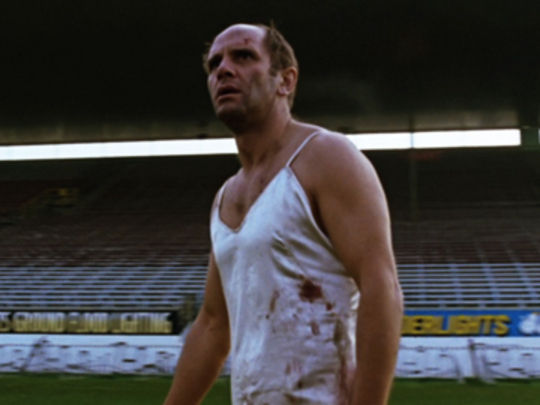
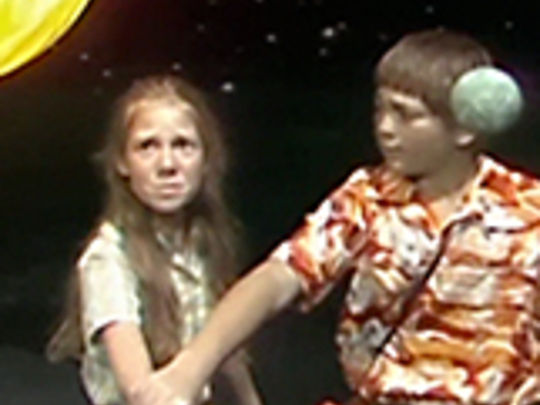
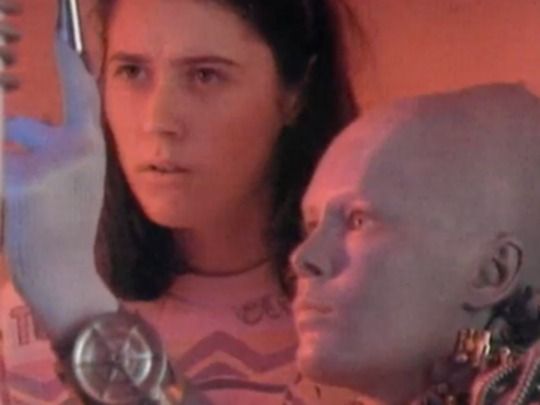
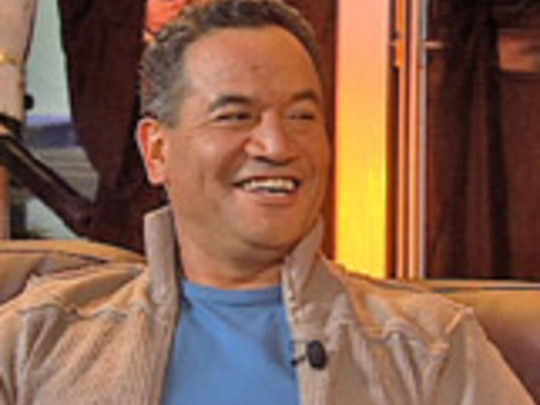

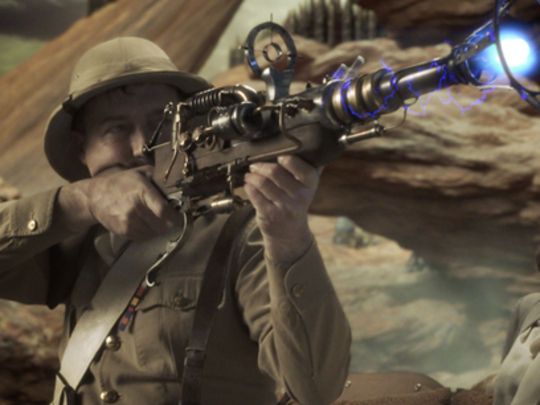
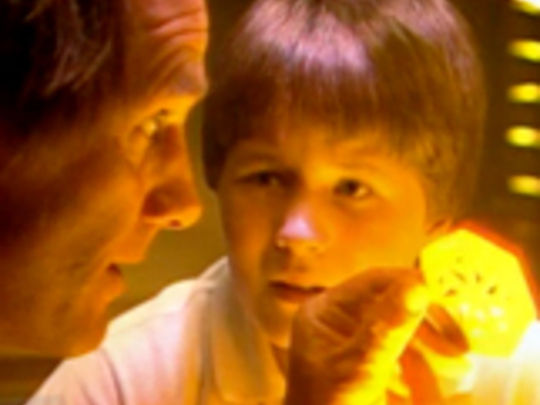
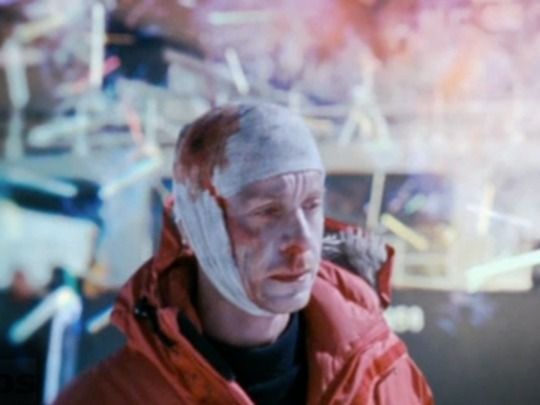
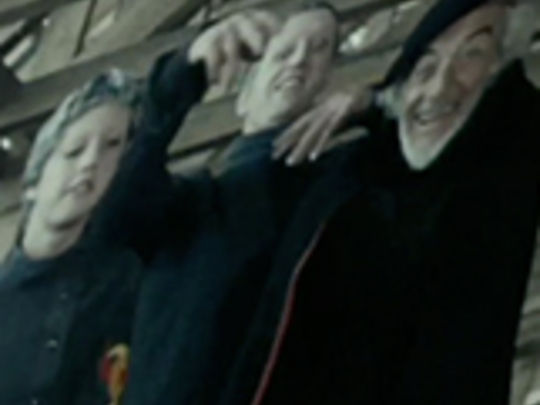
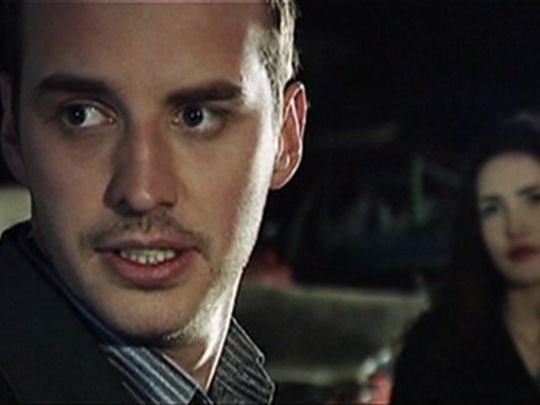
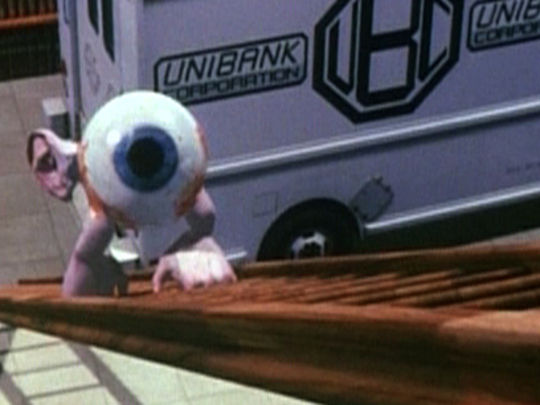
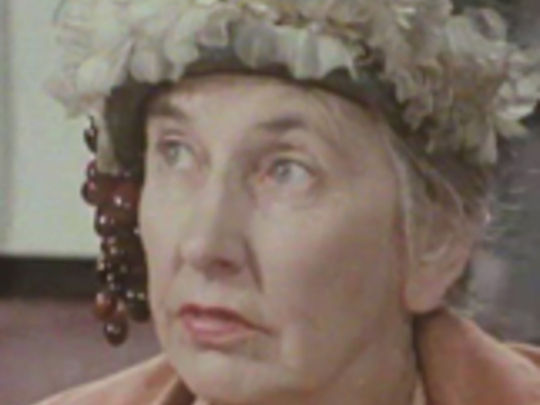
The Sci-fi Collection
The Sci-fi Collection
This collection has three backgrounds:
Science Fiction vs New Zealand

Maurice Gee goes Under the Mountain
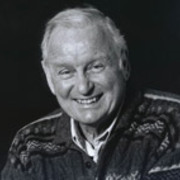
Watch out for the Wilberforces!
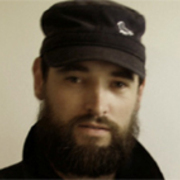
Science Fiction vs New Zealand
By Greg Broadmore 23 Aug 2012
It's a bit tricky to write about New Zealand science fiction on screen when to be honest, there's been so little of it. Which is entirely understandable — science fiction filmmaking tends to be expensive and New Zealand filmmakers have traditionally most often made films for our smaller New Zealand audience. Not a lot of scope there to spend your limited budget on spaceship miniatures and epic alien sets.
But what little there was at least tended to be engaging or provocative.
I grew up as terrified and transfixed by the Wilberforces from Under the Mountain as anything in Doctor Who; and I've recently re-watched The Quiet Earth, which is as powerful and stark today as it was back in the 80s. To be honest, I never really thought of The Quiet Earth as a sci-fi film before seeing it here in this collection. I just thought it was a surreal psychological story, of a type that only people who've sent themselves to the end of the planet to live on a quiet little set of islands away from everyone else tend to make.
Battle. Truck. I even like writing those words: Battletruck. Yep, they go together nicely. I saw it as a 12-year-old kid and for a fair while obsessed over it, drawing that monstrous, awe-inspiring looking machine in the margins of all my school books. My dad drove a truck and I liked Mad Max, so not hard to figure that one out.
And then there's Bad Taste, which was timed perfectly to have a knockout impact on me — excessive blood and gore, hilariously crass humour and eye popping special effects — everything I wanted as a teenage boy, and made in good old NZ. Just the right thing to stir my imagination and inspire me to create my own works.
But in the scheme of things, that's not really quite enough to feed a ravenous young mind, eager for space adventures and alien worlds.
Truthfully, I never had any expectation that New Zealanders would make a lot of sci-fi. It was everywhere I looked regardless, in games, TV and movies from the UK, US and Japan, and I got my fill.
I somehow didn't expect to see 'Māoris in Space' (which sort of came true in the Star Wars prequels — I would never have guessed that as a kid) or 'Wal Footrot builds a time machine out of No 8 wire and travels to Hamiltron, city of the future to marvel at how all the farmers of 2050 have jetpacks'.
I simply assumed that the little country I grew up in just didn't do stories about robot cops and alien hunters. But now, as my tiny brain ponders the conundrum, I am forced to wonder — is there some deeper reason that New Zealand hasn't made a lot of science fiction?
Oh yeah, the money thing ... I forgot about that for a second. Sorry.
But that's started to change at last. Avatar and District 9 were both in significant part made here (in more or less the same span of time) which is amazing when you think about it. Hardly a whisper of sci-fi for decades and then two of the biggest and most influential sci-fi films in recent history are released in quick succession with Kiwi crews and creativity fuelling them.
Was this in some way due to the latent Kiwi science-fiction imagination, heretofore untapped, being suddenly released like some pent-up pressure valve, blasting its contents out in one explosive burst? No, probably not. But it sounds good, so let's go with it. Neither are truly 'New Zealand films' in most people's eyes, but to hell with that way of thinking anyway.
All this makes me think one thing: 'what the hell is my point about science fiction and its relationship with this country that I was so luckily yet randomly born into!?' I joke! I have a point you see, and I'm coming to it.
I believe, that in the future, we as a nation, will look back at our humble exploratory efforts in science fiction filmmaking, and one profound fact will dawn on us, like the blazing blue light from a gigantic city-sized saucer, hovering over our shaky isles: 'Māori in Space' was a great idea for a film — why wasn't it greenlit sooner?'
Greg Broadmore has created books, games, short film and rayguns featuring adventurer Dr Grordbort. The illustrator and Wētā Workshop artist was one of the designers of sci-fi hit District 9. His website is here.
Maurice Gee goes Under the Mountain
By Maurice Gee 23 Aug 2012
Children in dreadful danger while around them the adult world carries on unaware. That was my first and abiding idea [when writing the Under the Mountain novel]. The fantasy of an invading alien race is common enough, but I wanted the action to be here, in places New Zealand children would know as their own. It had to be Auckland, where I grew up, and Auckland's main features, for me, are its volcanic cones and its beaches. So place and players were decided. But how to start?
One morning on my way to work I passed Mt Eden, brooding, half-seen in a mist, and I thought: I wonder what is living under there. The story grew from that question. The twins at its centre are redheads, to please my redheaded daughters. I had hoped to make the invading Wilberforces sad and forlorn — a dying race fighting for survival, but I'm not sure I managed that.
The story was transferred to the screen at a time of creative upsurge for New Zealand television drama. It had several pieces of good luck — in its producer, Tom Finlayson, its director, Chris Bailey, and its scriptwriter, Ken Catran, who kept close to my story while improving it with some great bits of his own. The actors were pretty good too, especially those Wilberforces. Special effects were in their infancy but who, even today, could improve on inflated tractor tyres for building the giant Wilberforce slugs?
I loved the story on screen. It scared me — and scared, I'm told, a whole generation of New Zealand children. I've watched it again recently and it works just as well now as it did then.
The best moment: the Wilberforce hearse is drawn up on the beach with its open back doors facing the sea. It's waiting for something; and the camera rushes in, some creature rushing with it, we don't see what. There's a great jolt as something lurching and heavy thumps on the floor. We still don't see it! The hearse door crashes shut. Terrifying.
Watch out for the Wilberforces!
By Paul Stanley Ward 23 Aug 2012
I visited Auckland for the first time as a five-year-old on a family summer holiday (kids sci-fi adventures always happen on a family summer holiday). Nearing the end of the day-long road trip from Marton, no doubt the back seat squabbling had made it an endurance for Mum and Dad. But I had bigger issues than who had to sit in the middle. As the Jabba the Hutt silhouette of Rangitoto loomed, at first I was afraid.
Then I was petrified. Under the volcano lurked ... the Wilberforces! Giant alien slugs slithering along uterine tunnels. These slugs slopped out of the sea and transmogrified into men with sweaty, slimy faces. Auckland was daunting.
The terror came courtesy of the 1981 TV adaptation of Maurice Gee's novel Under the Mountain. This was a febrile screen thrill: up there with a soul-stealing snake tattoo in Doctor Who in my nightmares.
That a TV show was such a vivid primer shows the mind-bending power of good sci-fi. Or it is testament to a susceptible imagination — perhaps this is why the genre appeals to children and young adults?
My earliest film memories were a mix of Flash Gordon (Queen! Saviour of the Universe!) and Battletruck — parochialism selects the latter as the original one. Though any local pride that the film was made here was found well in the dust of that heavy metal truck, rumbling through Central Otago like Mad Max on a Kiwi OE.
Sci-fi is an unsung genre in New Zealand filmmaking, yet it has contributed some of its most memorable images. Alongside Under the Mountain's slugs stands Bruno as man alone in a nightie on Eden Park, and Peter Jackson's alien giving the bird to the naysayers in splat-fi romp Bad Taste. Children of the Dog Star would later do for weather vanes what Under the Mountain did for volcanoes.
The production costs involved in creating alternate worlds means that sci-fi is an especially challenging genre for a small industry. The same challenges apply to realising history on NZ screens (eg. The Governor, Utu, River Queen) where epic scale opportunities come along only once or twice a generation.
Nevertheless triumphs of creativity over the limits of budget pulse through this collection. "We don't have the money, so we have to think." The phrase is nearly as overused as No 8 wire, but it was a scientist who said it (cheers Ernest).
The opening half hour or so of The Quiet Earth — described by Los Angeles Daily News as "quite simply the best science-fiction film of the 80s" — is a paragon of effective no-bucks world-making. Bruno is last man standing amidst shrewdly scaled scenes: a home-styled Nuremberg rally (with cardboard cut out dictators); a vacant 80s mansion, church, stadium. Ditto Peter Jackson's alien invasion in Bad Taste with FX brewed in his Mum's Pukerua Bay stove.
In Battletruck — a 'B Movie' if there ever was one (it was backed by Roger Corman) — the spare parts are part of its 'end of days' charm. In a 2012 BFI interview, Battletruck's US director Harley Cokeliss cited the Smash Palace spirit in New Zealand, "where the chef — when he wasn't making lunch — was laying [camera] tracks."
Praising truck designer Kai Hawkins and the "remarkable" production team as "artists with chainsaws", Cokeliss goes on:
"They were scavengers ... we had a nothing budget. [...] We had so much talent out there, and they were literally working with junk. [...] The look and the feel and the notion ... geodesic domes were very New Zealand. It's kind of re-processed, re-used, re-worked. That's a kind of an ethos there because they're very isolated ..."
A convoy of kids' TV series (Under the Mountain, Children of the Dog Star, The Boy from Andromeda, Night of the Red Hunter) in the '80s and '90s used nimble production design to exploit willing young minds, and found global sales and cult repute.
In the genre definition contest (sci-fi or fantasy? 'soft' or 'hard'?) NZ can even lay claim to an indigenous sub-genre: 'Volcanic Sci-fi'. Whether it's aliens underneath them, nukes planted in their craters, or the whole thing doubling as a planet-destroying raygun ... like Howie, Kiwi sci-fi has gone volcanic.
Still, sci-fi is relatively rarely produced in NZ: an outsider on the edges of the literary adaptations and whale riding coming of age tales. The laureates themselves have never discriminated: Gee, Mahy ... Vincent Ward's unproduced script for Alien 3 is legendary. But with its fans and conventions and an odour of pimply 'young adult' excitability, it's never been the first pick in the screen XV.
So it was a revelation to discover via this collection that there is a local sci-fi whakapapa. There's 1972's An Awful Silence when extraterrestrial bodysnatchers invaded Wellington, 1974's Games Affair's performance-enhanced sheep (eat your heart out Ostapchuk), and even a trippy alien's eye view of 70s car culture in NZ ... who knew?
Some ambitious short films have stepped up to the genre's world-warping challenges. Dank noir tale Planet Man and CGI beat-the-system classic Infection won notice at Cannes. Icy Ballardian survivor story Vostok Station was nominated for a 'New Frontier' award at Sundance (another Kiwi sci-fi sub-genre could be 'Antarctic Angst', with No Ordinary Sun joining Vostok at the pole).
There may not be a laser line between the DIY deflating villain in The Games Affair and the CGI motion captured world of Avatar — indeed it's disputable that the made-in-Miramar movies are 'Kiwi' films. What isn't disputable is that local sci-fi continues to shoot for the 'what if?' questions. James Cunningham's Dr Grordbort adaptation, and the low budget feature Existence, are recent examples. Weta FX now provide a gold standard in world-building skills (for unauthorised weta effects watch here).
I re-viewed Under the Mountain for this collection, as a grown-up. Even with the psychic silliness and 80s shorts, it still holds up. The lair's production design would do HR Giger proud, and the NZSO score and suggestive editing maintain the menace as the breathless twins go where they shouldn't. In the quest to find the answer to 'whaddarya?' I'll take my Under the Mountain over My Father's Den any day.
When it's sticky and muggy in Auckland — three decades on — I still get a whiff of the Wilberforces ...